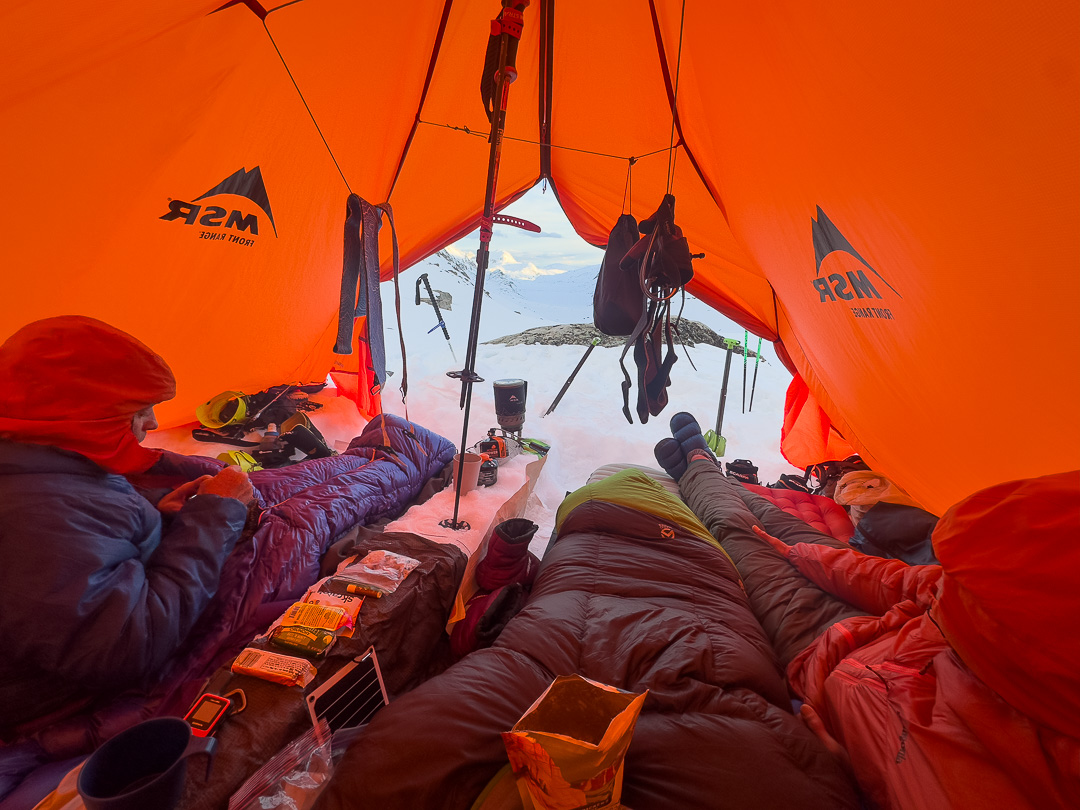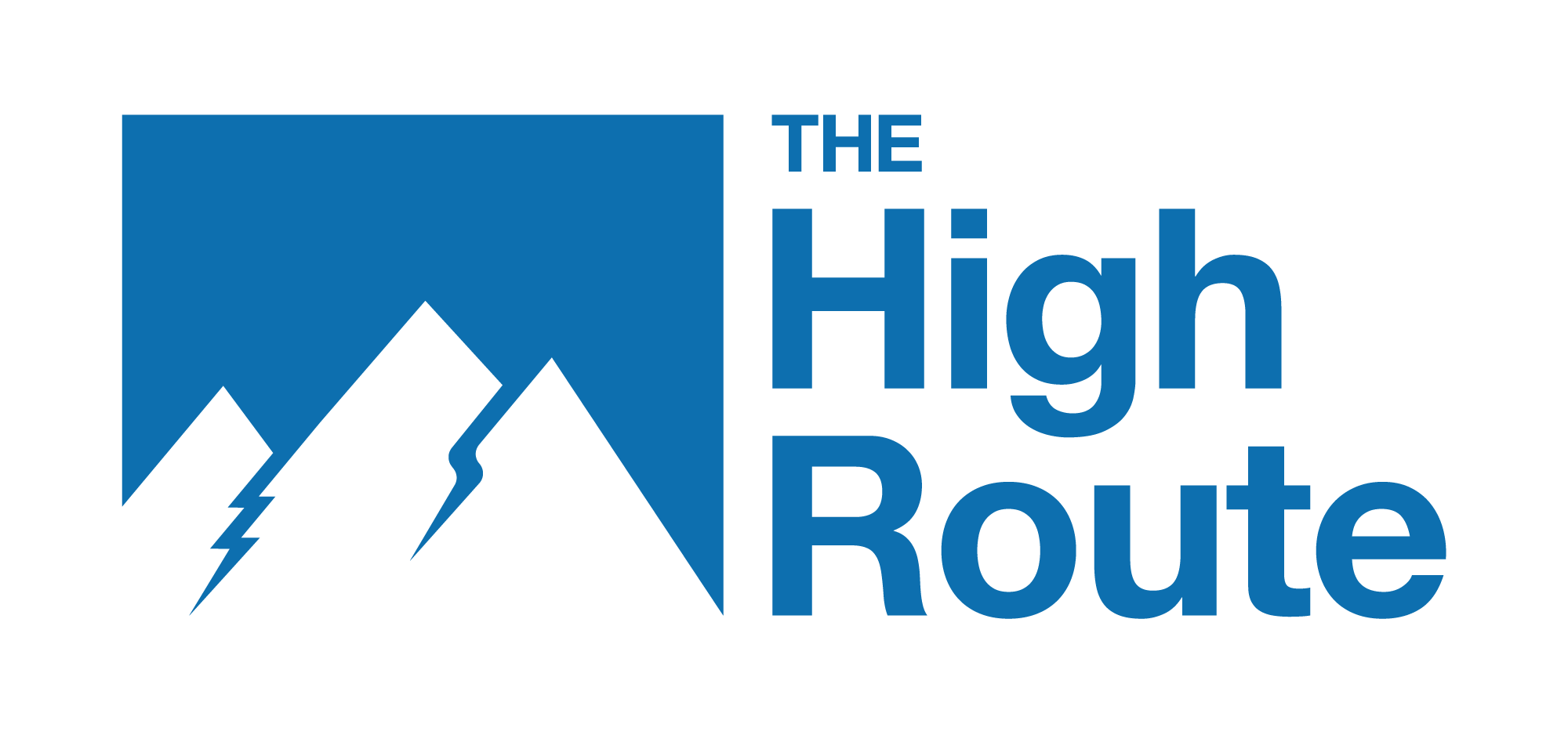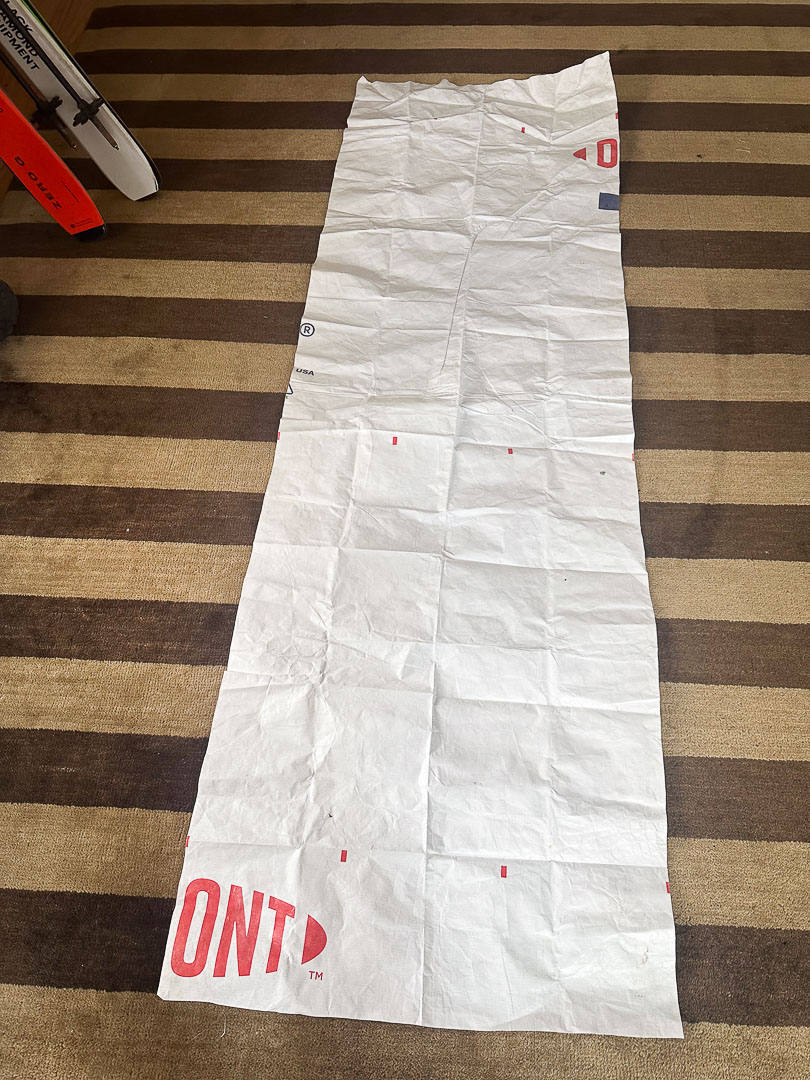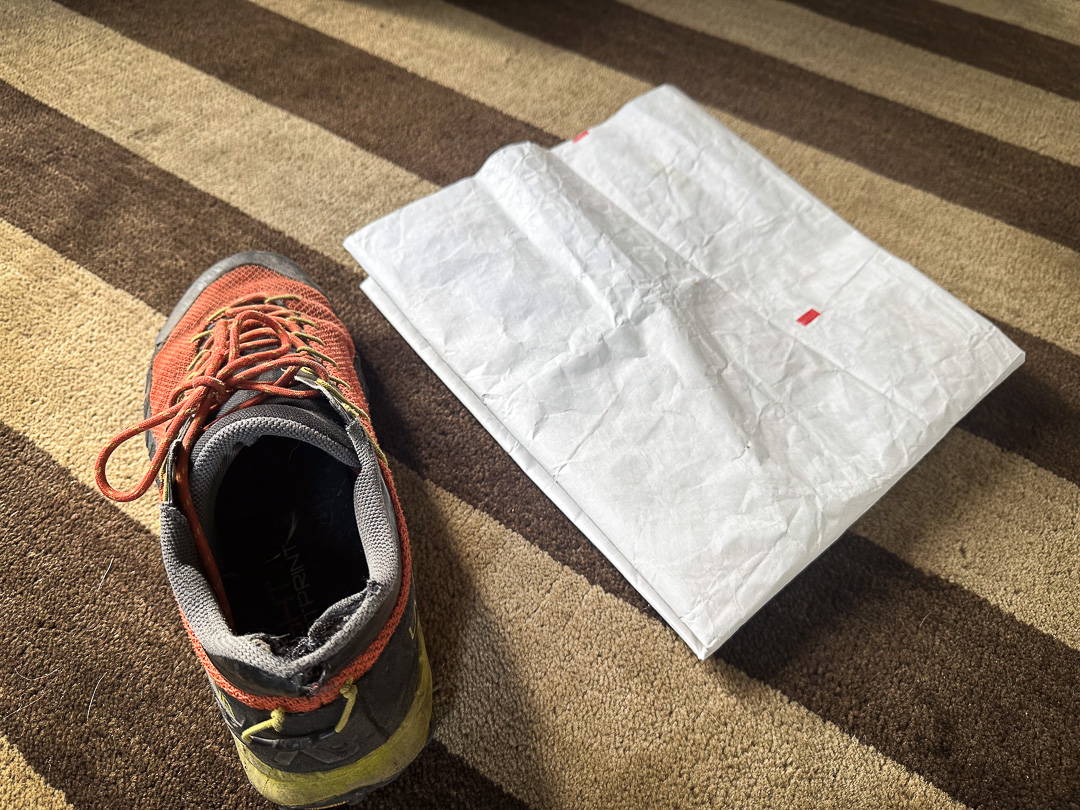
A cozy mid with a view. The sleep system begins with a Tyvek ground cloth under the sleeping pad/foam, to interface with the snow.
Tyvek® Forward Together™.
As the lead sentence from the DuPont chemical marketing team eludes, the fine chemists at Dupont continue to make “better living through chemistry.” Sarcasm aside, in the short run, at least, the folks at DuPont have delivered. Tourers sleeping on snow know that snow melts. They also know that heat generated by burning calories (we call it body heat) can melt snow and wet out a sleeping pad.
Thanks to Brian Parker’s ingenious lightweight backpacking hacks, I was introduced to a unique use for Tyvek house wrap. He cut me a piece to use as a hydrophobic barrier in my sleeping system. I placed the Tyvek sheet against the snow, followed by a ⅛” closed cell foam pad (minimal R-Value), and topped it with a Therm-a-Rest Neoair Xtherm inflatable pad, which boasts a claimed R-Value of ~7. For those interested, I used an older TNF Inferno 0 sleeping bag.
Tyvek makes sense as the first barrier between snow (and potential unfrozen water) and me. As far as we were concerned, Tyvek’s key attributes are waterproofness and durability. We can confirm that the material proved sufficient in both categories. As an aside, Tyvek is loud and crinkly (avoid it if you think Gore-Tex Pro is loud and crinkly). However, there was no discernable noise once we laid the Tyvek on the snow and overlaid the subsequent layers. Yet, be warned, Tyvek is slick. Prep the snow underneath your sleeping space. In other words, make your sleeping platform as flat as possible; otherwise, you and your sleeping pads risk slowly creeping downward during the night.
Tyvek is also relatively light. The Backpacking Light forum calls the standard Tyvek house wrap (which we used) 0.2 oz / sq ft. Here at THR, we’re calling it ~ 60g / sq. meter. Gram counters can lighten the load by a few paper clips / sq. ft., too. There’s type 1443R Tyvek, also known as “kite” Tyvek, for…making kites. (Kite Tyvek weighs 40gm /sq. meter). You can find what looks to be a 10.5′ x 5′ piece of 1443R Tyvek on Amazon for $32.00. We went with the slightly standard, yet heavier, Tyvek house wrap for our recent traverse.
According to our basic fabric engineering background, Tyvek is non-woven but bonded. It is made from high-density polyethylene fibers (HDPE). No doubt, you’ve seen Tyvek wrap on a house being built near you. The material is touted as UV-resistant, weatherproof, and breathable. One side of the Tyvek is somewhat shiny, while the other is semi-course, to a degree. DuPont calls the shiny face the front and the rougher side the back. However, they claim the physical properties of each respective side are similar.
Our Tyvek sheets are rectangular, fold nicely, and stuff quickly inside a pack. As we packed up each morning, shaking any residual moisture off the sheets was a breeze. The cut dimensions are 72″ (183cm) long X 24″ (70cm) wide. The sheet weighs 72g.
Yes, we used a “mid” for sleeping. For those unfamiliar, a “mid” is a pyramidal floorless tent. In the past, I’ve braved winter nights without a ⅛” closed cell pad while using a mid. However, I’ve learned my lesson. It’s reassuring to have the added protection of a foam sheet under a somewhat delicate inflatable pad. And , from now on, I’ll be sure to pack a Tyvek sheet for my overnight winter excursions when using a floorless tent.



What size was the closed cell foam pad? I ask, because if it was full size, what’s the point of the tyvek? The foam is already waterproof, so that’s no benefit.
Hey Slim, good question. We all had some iteration of the foam pad. The size of my foam pad was roughly the same dimensions as the Tyvek. But, for me, the foam pad offered some redundancy in the event my inflatable pad sprung a leak and was not fixable in the field, I at least had some form of insulation from the snow. (The Tyvek was yet another light tool to haul along that had the upside of creating a weatherproof barrier when needed. Although, granted it has limited applications.) The Tyvek also came in handy on several days—I would spread it out on the snow, and create a “dry” place where I could change out clothes or spread out my gear as I packed/unpacked. Lastly, and Kelly came up with this idea, we would lay a few Tyvek sheets down in the tent, but we ran them with the long side perpendicular to our sleeping bags’ head-to-toe orientation. We were able to create a “tub” of sorts, so our sleeping bags would brush up against the Tyvek while we slept rather than a snow wall or a tent side glazed with condensation. This application worked well.